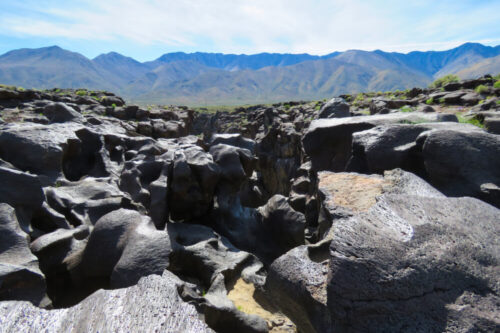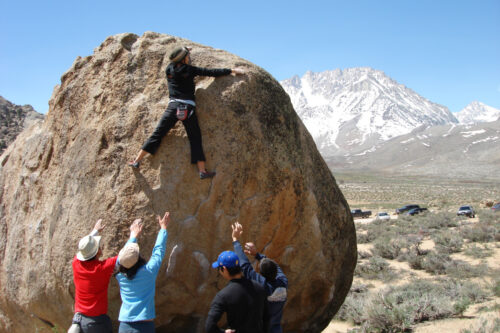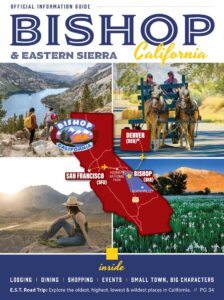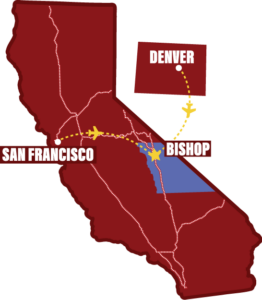Buttermilk Country

Buttermilk Road no longer carries dairy trucks from “Old Joe” Inman’s Dairy along its rough and rocky track that, according to local legend, could bounce and churn fresh milk into buttermilk on its way into Bishop.
Now that the dairy has long since disappeared and workers from an all but forgotten sawmill no longer get cold cups of buttermilk on hot summer days from “Old Joe”, the landscape looks as pristine as it did to the early travelers of the mid 19th century.
A different type of traveler now frequents the Buttermilks, where the road is still rough and the tracks leading from it are rougher still. In this hilly terrain and vast expanse of high desert, studded with magnificent boulders, recreation opportunities abound.
Under the auspices of the US Forest Service much of this land, between highway 168 and Horton Creek, is allocated for ‘dispersed recreation’. Although interspersed with private and non-public utility lands, the Buttermilks basin is a huge tract allowing for a great variety of recreational activities with camping allowed on the public lands.
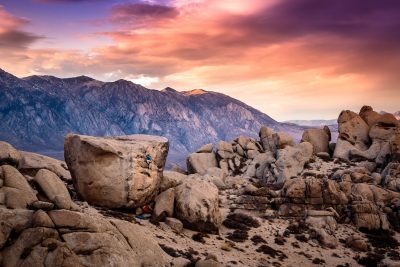
Numerous dirt tracks and single-track trails connect for miles of exciting mountain biking and dirt biking in and around the Tungsten Hills. Massive boulders provide some of the most accessible and diverse bouldering in the country with routes that offer everything from fun scrambling to highly technical ‘problems’ that challenge even the world’s best climbers.
Springtime brings the birdsong as large populations of breeding songbirds nest along the willow-lined stream that meanders though the Buttermilks. It also brings the desert peach into bloom with its pink blossoms and jasmine-like scent giving soft color and sweet fragrance to this arid landscape.
The bitterbrush presents its yellow color and spicy perfume in late spring and when fall comes so do large herds of mule deer to feed on the tender shoots of the bitterbrush and sagebrush that is abundant in Buttermilk country.
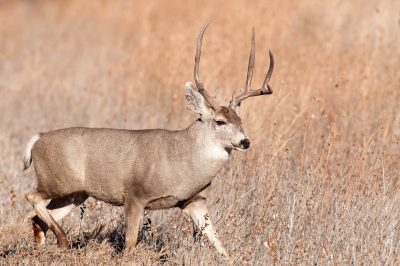
As the mule deer descend from the mountains so do the mountain lions, and travelers are cautioned not to let children wander off too far alone. Sightings of these big cats, which biologists call Puma concolor – literally ‘cat of one color’, are rare and no attack has ever been recorded in the region.
Summer days are hot and winter nights are cold. Spring and fall are unsurpassed. Mountain peaks tower above the desert floor and a canopy of bright stars sparkles in the night sky like a never-ending display of brilliant fireworks.
Follow Highway 186 West from Bishop for 8 miles and turn right onto Buttermilk road. Venture into a land that will let you stretch your eyes, restore your soul, and ease your mind of the pressures of everyday life.
If you’re camping on Inyo Forest Land, remember to stop in first at the local USFS Ranger Station for a map and campfire permit, for when conditions allow.

